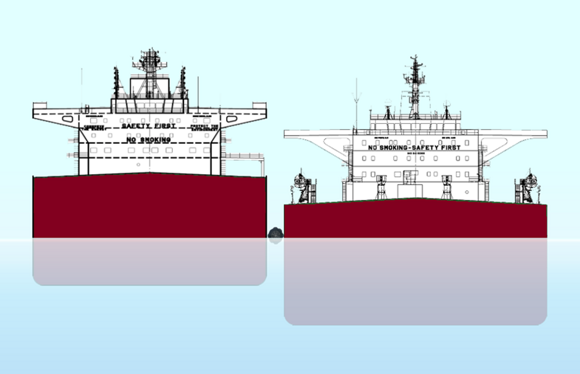Ship to Ship Transfer Operations Plan (STS)

The criteria of MARPOL Annex I, Chapter 8, as modified by Resolution MEPC.186(59): Prevention of Pollution during Transfer of Oil Cargo between Oil Tankers at Sea, Rules 40, 41, and 42, are used to characterize ship-to-ship transfer operations.
Oil tankers with a gross tonnage of 150 or more that are involved in STS operations, or the transfer of oil cargo between oil tankers at sea, are subject to the restrictions. Bunkering operations shall not be subject to the regulations.
Ship-to-ship transfers, commonly referred to as lightering operations, involve moving petroleum products or crude oil between seagoing tank ships that are docked next to one another. Such activities may be carried out with both ships moving at a very low speed or with one ship at anchor. The procedure generally consists of the approach maneuver, berthing, mooring, hose connecting, cargo transfer, hose disconnecting, unmooring, and unberthing, as well as the departure maneuver.
The STS transfer operations include:
The conventional or standard lightering process, where the discharging vessel is fully loaded, while the receiving vessel is in ballast condition. (see Figure 1);
The reverse lightering process, sometimes referred to as “topping-off”, where the laden supply tanker discharges to a partially laden receiving tanker.
(see Figure 2).
In general, the STS transfer operation process can be divided into 5 phases as outlined in the following table:
Phase 1. Pre-Arrival Planning: The Pre-Arrival Planning should be carried out before any STS operations commence. The planning of the STS operation could be performed by the ships operators and managers together.
Phase 2. Arrival: During the Arrival stage of the operation the two ships conducting the STS operation should establish radio communication, and concur that all operational procedures has been assessed and agreed upon.
Phase 3. Berthing: The Berthing phase of the STS operation consists of the maneuvering and mooring of the two ships. For the maneuvering operation a contingency plan should be in place to deal with any emergency situation.
Phase 4. Cargo Transfer: The Cargo transfer phase should only commence once the two ships are securely moored. The Master should ensure that all the recommended safety procedures in this plan are followed. A contingency plan should be in place to deal with any emergency situations during cargo transfer
Phase 5. Departure: Departure is the last phase of the STS operation.
